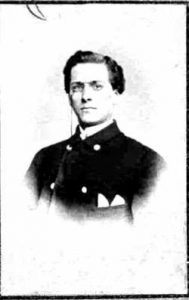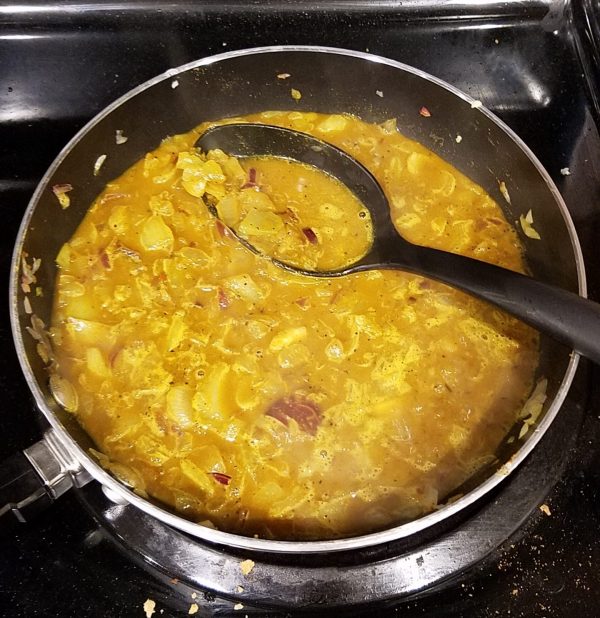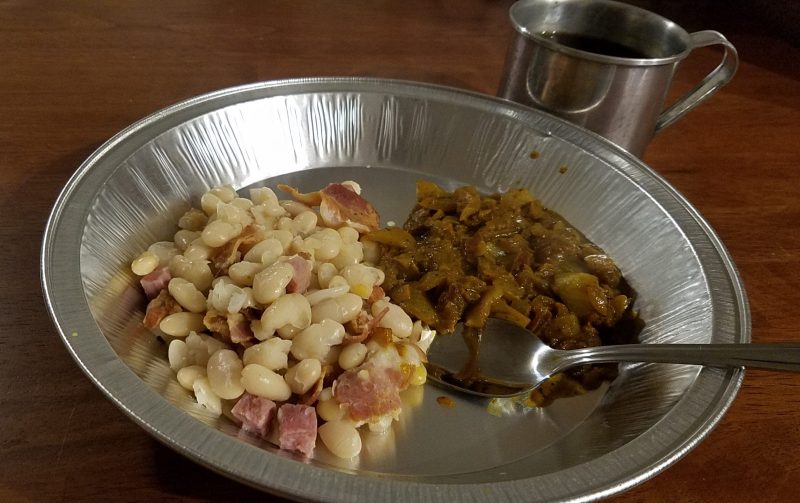Civil War Cooking: Theodore Dodge’s Boiled Beans with Curry

The winter of 1862-1863 for the Union’s Army of the Potomac has been compared to the Valley Forge hardships of the Revolutionary War decades earlier. For the Civil War soldiers, morale plummeted after the Battle of Fredericksburg and year of losses in the east. Huddled in huts and muddy camps, the Union volunteers contemplated if it was worth staying and if this war was worth fighting.
Theodore A. Dodge, a young officer in the XI Corps, felt mired and heavily discouraged by the military defeats. His physical discomforts added his mental frustrations. On December 20, 1862, he wrote in his diary:
Slept colder last night than the night before even, and the night itself was colder. However as soon as one gets breakfast, one is warmed up again. We have got our mess in order again; for breakfast this morning we had stewed kidneys, hash, and beefsteak. Now this sounds well for camp, don’t it? For dinner, curry, boiled pork and beans; good too. For tea we shall have cold beef; good again. The only things is, it is all beef. No other meat can be procured, except salt pork, and between the two you can well understand how a man can get tired. But this better than most soldiers have. I have been desiring to change my underclothing, but it is so cold that I never get to it. My hands too get so badly chapped that they give me much inconvenience.
We have just heard that 39 of our teams have captured, and there is a rumor that the Rebels are at Brentsville, between here and Washington. I am inclined to credit it, for, as I tell you I have no faith in our leaders, We shall probably move tomorrow. I am glad to see that [the] Government has begun to dismiss officers who fail in their duty. We have so much trash in the way of officers from our mode of recruiting that many need to be dismissed. [Page 121, emphasis added]
Curry?! That was a new item to see in a Civil War soldier’s writings. And it seemed worth investigating.
It turns out that curry was one of the spicy items available in the rather bland and typical American diets during the mid-19th Century. British colonization brought curry to Europe and then the recipes and spices made their way into some parts of American cuisine. Food historian Sarah Lohman did some fascinating research about curry sauce and found an 1840’s recipe which was the basis for my culinary trial.

The pork and beans were pretty easy, though I used chunks of ham and a little bacon instead of the more expensive salt pork. Soaked the beans, then boiled them and added the meats for the final 30 minutes. I interpreted the primary source to be beans and pork on a plate, not a bean soup, so I drained off most of the liquid.
The curry sauce was much more interesting. Starting with the spice blend, I quickly realized that a little would go a long way, and it’s intriguing to wondering if soldiers were getting their spices sent from home or if they were purchasing them somewhere. They certainly aren’t on the standard rations. A packet of spices could have really livened up the boring pork and beef, as Dodge suggests. I don’t know if the soldiers would have made their curry with onions; it’s possible, but the spices could also just be mixed with water to form a thin sauce.
As I ladled the meal, I tried to image it’s savory and spiced scent filling a cold tent or log hut. The smells mixing with the slightly stenchy smell of damp, cold wool, fire smoke, worn leather, and decomposing autumn leaves. The curry would definitely take over the sense of smell at least for a few minutes.
Deciding to be brave even though I knew the spice blend, I took a big bite of the beans and curry. HOT!!! I like spicy foods, but this had me reaching for a drink. Cutting back on the amount of curry sauce added to each bit, I keep eating. The food was warm in temperature, but the spices also make the consumer feel warmer. I wondered if that was something “the mess” appreciated in addition to the different flavor.
Making this dish helped to dispel a myth for me. I had always supposed that aside from a gumbo type of dish, most Civil War soldiers ate pretty bland foods. “Boring” food is rather typical in White American cooking of this period and garden herbs, salt, and pepper are about the extent of seasoning in most of those recipes. However, curry and other spice blends were making their way into some cuisine and were popular enough that at least a handful of soldiers were eating curry on a cold December night in 1862. It’s not a dish that I would call mild…or boring!



You are very brave to try those meals. What about the boiled kidneys, yuck!
Boiled kidneys? No thanks!